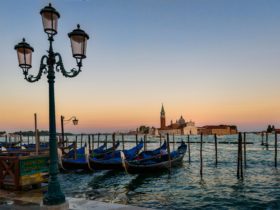Summer is here, and many people are planning their vacations. For those who want to drive to the beautiful Adriatic Sea in Croatia, there are a few things you need to know before hitting the road.
Thanks to the country’s admission to the Schengen area, driving to Croatia has become faster, with no waiting at the borders. However, with the introduction of the euro, travelers should be prepared for higher prices, including toll fees. Toll fees have also increased in countries like Austria, Slovenia, and Slovakia. Be aware of possible high fines.
Many tourists prefer to drive to Croatia via Hungary. A regular traveler, Igor Sirota from the ÚAMK Automotoclub, recommends this route and says that the journey from Prague to Trogir on the coast took him less than 11 hours with breaks for refreshments. “The whole trip was fine, although the highway was under repair after the Hungarian border. But it looked like pre-season repairs,” he said.
Another option is to drive through Austria, which is faster but more expensive and, as Sirota notes, more nervous due to the higher traffic.
It is worth noting that fuel in Hungary and Austria is more expensive, so it is better to fill up in Slovenia or Croatia. In Austria, toll fees for tunnels and highway stickers regularly increase according to inflation. This year, the ten-day sticker is 30 euro cents more expensive and costs 9.90 euros (234 crowns). Remember that the e-vignette in Austria is valid only 18 days after purchase, or you must check in the e-shop that you are buying for a company. The easiest way is to buy a sticker at a gas station in the sticker version, which is still used in parallel.
Slovakia has more expensive stickers, which cost 12 euros (284 crowns). Since Thursday, Slovenes have increased the price of a seven-day vignette from 15 to 16 euros (378 crowns).
In the Alps, drivers should follow the variable IG-L signs that limit the speed to 100 or even 80 km/h mainly in the Alps, to reduce pollution and noise. The penalty for exceeding the speed limit is many times higher than outside these sections, up to 3,000 euros (71,290 crowns).
In Croatia, the country increases tolls every summer by 15 percent compared to the regular year-round level. Motorists can buy a toll box, which allows them to charge toll credit at 21 percent lower prices and helps avoid possible traffic jams at toll booths. The ENC box for contactless payment can be purchased near large toll booths or newsstands for about 15 euros (356 crowns).
However, drivers in Croatia should be cautious about fines since the country has expanded its camera system this year and raised the limits on some penalties. The highest rate is for speeding in the city, where exceeding the limit by 50 km/h can result in a fine of 2,700 euros (64,000 crowns)—on the highway, exceeding the limit by 50 km/h results in an additional penalty of 970 euros (23,000 crowns).
“Drivers should remember this amount since the same fine applies to arguing with the police,” Sirota warned.
Payment for fines can only be made by card. It is necessary to have a card also for paying toll fees. Cash payment is possible only at some smaller toll booths.
If you plan to drive to Croatia this summer, follow these tips to avoid unpleasant surprises and enjoy your trip to the beautiful Adriatic Sea.









